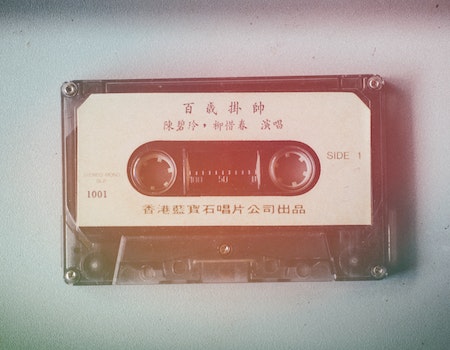The Four Chinese Tones and How They Affect Meaning
Just when you think you've mastered the Chinese alphabet, they throw something else at you. You guessed it: Chinese tones! Mandarin Chinese has four distinct tones that can completely change the meaning of a word.
To be able to read the “pinyin” (拼音), which is the system of phonetic transcription of Chinese characters, it is not enough just to know how to pronounce the syllables in Chinese (for which, by the way, I leave you with a link to the article that explains it to you “the consonants in pinyin") but we must also learn what Chinese tones are and how we can pronounce them well.
Are you ready to learn about them?
Table of Contents
→Sign Up Now: Free Trial Mandarin Lesson With a Native Teacher!←
Chinese tones: what are they?
Intonation, which is a melodic curve present in human speech, is a common feature in any language. Chinese tones can convey ideas or feelings, such as anger, joy, irony, questioning, or surprise. In English, for example, we use rising tones to ask certain types of questions, and falling ones to sound assertive.
At the same time, we may use intonation to give emphasis to a specific part of an utterance. For example, if someone wrongly states that you don't like coffee, you can correct them by saying "No, no. I said I don't like American coffee". In this case, pitch, volume and timing will work together to draw attention to the part of the sentence that you want to draw attention to.

In short, intonation helps to express ideas and feelings as well as add emphasis in any language.
What is special about Chinese, though, is that intonation plays an even greater role in this language, since it can (and must be) used to change not only the speaker's intention but also the meaning of key phrases. In Chinese, there are four main tones that speakers use to shift the meaning of words.
Let's see what they are and how they can affect the meaning of one specific word: MA (马).
The four Chinese tones
Mandarin Chinese has 4 tones which are:
- Tone 1: represented by a straight line (in Pinyin), as in 妈 (mā) — mother
- Tone 2: represented by an ascending line, as in 麻 (má) — hemp
- Tone 3: represented by a curved line, as in 马 (mǎ) — horse
- Tone 4: represented by a descending line, as in 骂 (mà) — to scold
The 4 Chinese tones in detail
As we have seen so far, the tones in the Chinese language are not only used to express emotions, as is the case in English. In Chinese, the tones are part of the meaning of a sentence, which means that the same term can have different meanings depending on your voice inflexion. That's how powerful Chinese tones. So let's delve into them one by one:
The first tone
The first tone is a uniform sound that does not vary in intonation, that is, your pitch does not go down or up; rather, you have to maintain it in a flat note from the beginning to the end. And it is for this reason that the mark for this tone is a straight line.
Mā — mother
The second tone
The second tone is a rising sound, it starts at a normal tone, but increases in gravity and ends higher than it started. Just as if you were asking a yes/no question or you were expressing disbelief!
Má — hemp
The third tone
Unlike the first tone, the third tone is not flat. Rather, it is a tone that descends and then ascends, forming a kind of curve in the sound.
Mǎ — horse
The fourth tone
The fourth tone is known as "the karate punch" since it is a descending sound with great force, as well as the sound that a karate fighter makes when he is going to break a board.
Mà — to scold
The importance of mastering Chinese pronunciation and spelling hand in hand
Mastering the tones of Chinese is important because they are part of the meaning of a sentence, so if you don't pronounce them correctly, you could be saying something completely different from what you wanted. And as we have seen, it is not enough to simply know how to pronounce each syllable separately; it is necessary that we learn how to pronounce them correctly in combination with the appropriate Chinese tones. This way, we can make sure that what we are saying is exactly what we want.

When you learn a language as challenging as Chinese, it can be tempting to spend a lot of time on the study of its writing system but, mark our words: if you want to use your Chinese skills for communication and not only for writing, it is important that you dedicate time to the study and practice of pronunciation. It may seem like a huge challenge, but we can assure you it will be worth it in the end!
How we can help you
Listen & Learn is a company dedicated to language teaching with more than 15 years of experience. Our Chinese teachers are highly qualified and experienced in teaching Mandarin as a foreign language, and students all over the world benefit from their patience and professionalism.
→Sign Up Now: Free Trial Mandarin Lesson With a Native Teacher!←
At Listen & Learn, we offer both private lessons and group classes in two modalities: online and in-person. We also have a wide range of courses and resources to help you learn Chinese on your own, at your own pace. What's more, since our courses are tailor-made to suit the needs of each student, you can be sure that you will achieve the best learning results in the shortest time possible.
For all these reasons, we are the best company to help you learn Chinese in the most effective way. So stop hesitating and contact us today to start your journey! Let's take on the challenge of mastering Chinese together!


